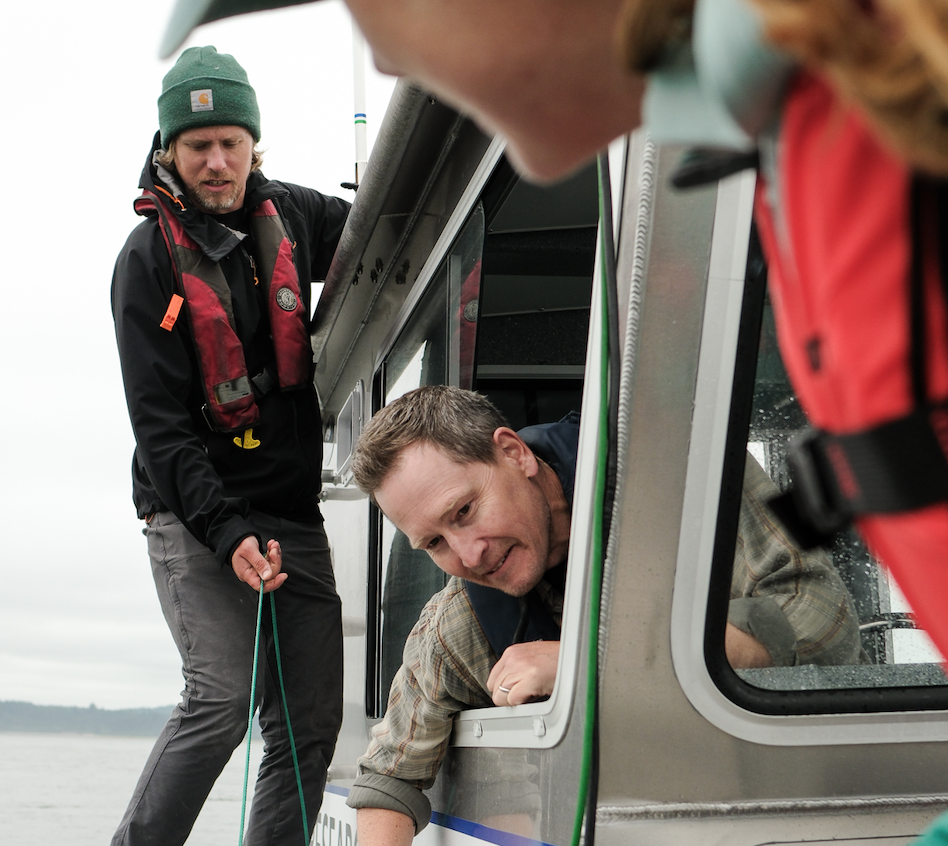North Head Lighthouse: Shedding Light
Published 5:00 pm Monday, May 10, 2010

- Using a spray bottle and a razor Chris Gustafson cleans off paint residue on one of the original windows on the back of the barn.
ILWACO – The industrial sounds of saws, hammers and electric sanders temporarily muted the nearby Pacific Ocean and the melodic bird chirps at the North Head Lighthouse Saturday as 14 students from the Clatsop Community College historic preservation and restoration program were on site to repair and restore the late 1890s lighthouse keeper’s barn.
The focus of a two-day workshop offered through the college in cooperation with Washington State Parks, the 30-foot by 20-foot barn and attached 20-foot by 10-foot tool shed have historic value but have seen better days.
CCC instructor Lucien Swerdloff says in the height of its use, the barn had ramps in the front to transport horses to the four stalls that once existed on each side. The original stable windows – four at each end of the barn – were small, the glass only measuring 10 inches by 12 inches. But for some reason, half of the windows were replaced by much bigger ones in the 1970s. Due to the structure’s age and close proximity to the ocean air and the harsh elements, the plywood and studs had rotted out and could be crumbled with one’s hand in some places.
Over the past two Saturdays, historic preservation and restoration students patiently removed the larger windows and the siding surrounding them; fabricated and installed smaller, time appropriate windows; replaced the existing studs with stronger ones; jacked up the rear of the tool shed to replace a wooden beam and reinforce the old joists; and replaced the siding and trim. Swerdloff says the two-by-four studs were cut from two-by-sixes that State Parks had salvaged from another barn, and the replacement siding was also salvaged – and matched beautifully with the rest of the exterior.
Kevin Palo, one of the project leaders, said the workshop was “real world experience” for students to implement all phases of the skills they’ve learned, from researching, assessing and documenting to replacing, restoring and preserving.
Student Becky Hass said she enjoyed the hands-on aspect of the workshop, especially learning how to maintain and preserve a structure because “damage like this is done by neglect rather than obsolescence.”
“This is killer, this is a great project,” student Barney Perrine remarked while working on the tool shed. “This is a great class, it’s going to be very popular … It takes you back to another time. So many of these treasures get plowed over and burned, so this has been fun and I think I may make a career out of this.”
“Friendships are being built so that we can work together on projects after graduation,” said student Randy Brown with paintbrush in hand. “And there’s so many different fields of background here. My background is in signage and landscaping design.”
State Parks Interpretive Specialist Stephen Wood says the barn will soon serve as a gift shop and an office space for the Keepers of the North Head Lighthouse.
Currently in its first year at CCC, the historic preservation and restoration program offers a one-year certificate and a two-year Associate of Applied Science degree in the field of restoring and preserving historic residential and commercial buildings.
The program’s beginning stages focus on industrial safety, tool and shop basics, construction drawing and printreading, building codes, math and more. The more advanced classes include sustainable building, historic preservation and project management. Students also enroll in classes such as computer graphics, drawing, business, AutoCAD, ethics, moisture and thermal protection, doors and windows, stairs, finish work, and foundation, floor, wall and roof systems.
Swerdloff says he tries to get students to participate in as many real world restoration projects as possible, preferably ones for non-profit groups and government divisions. In recent months, the CCC Historic Preservation and Restoration class has replaced more than 30 windows in a three-story apartment building in Astoria for the Northwest Oregon Housing Authority, and worked with the Community Action Team to help low-income individuals weatherize their homes. They’re also in the process in restoring the columns on one of the officer’s houses at Fort Columbia.
Swerdloff says the class gladly accepts donations of tools and other building supplies to use during the learning process, and he’s also hoping to find a shop for the class to use. For more information about the students’ work at North Head, or to donate materials, contact Lucien Swerdloff at Clatsop Community College, 503-338-2411.









